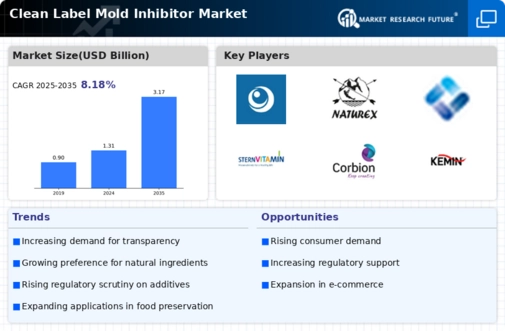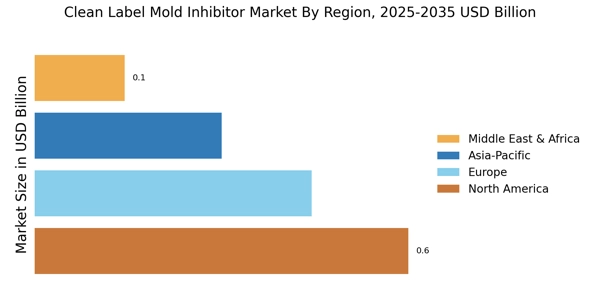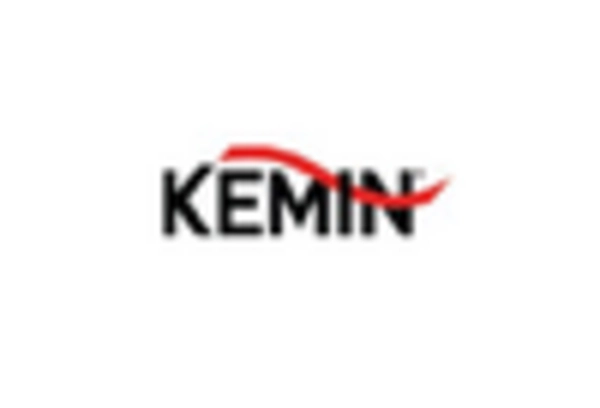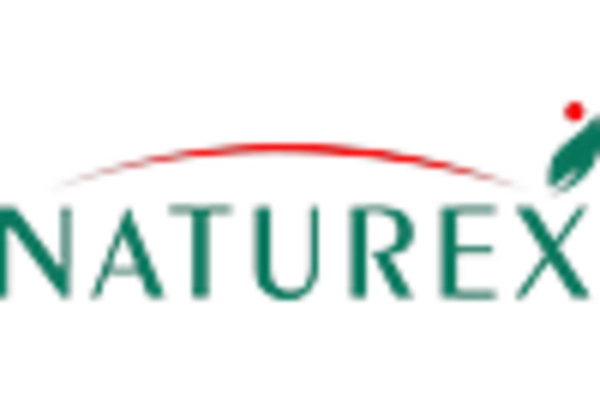The Clean Label Mold Inhibitor Market is currently characterized by a dynamic competitive landscape, driven by increasing consumer demand for natural and clean label products. Key players such as Kemin Industries (US), BASF SE (DE), and DuPont de Nemours, Inc. (US) are strategically positioning themselves through innovation and partnerships. Kemin Industries (US) focuses on developing natural mold inhibitors derived from plant-based sources, which aligns with the growing trend towards sustainability. Meanwhile, BASF SE (DE) emphasizes its commitment to research and development, aiming to enhance product efficacy while maintaining clean label standards. DuPont de Nemours, Inc. (US) is also actively pursuing collaborations with food manufacturers to integrate clean label solutions into their product lines, thereby enhancing its market presence.
The market structure appears moderately fragmented, with numerous players vying for market share. Key business tactics such as localizing manufacturing and optimizing supply chains are prevalent among these companies. For instance, Kemin Industries (US) has localized its production facilities to better serve regional markets, which not only reduces lead times but also enhances responsiveness to local consumer preferences. This localized approach, combined with the collective influence of major players, shapes a competitive environment where agility and innovation are paramount.
In August 2025, Kemin Industries (US) launched a new line of clean label mold inhibitors specifically designed for the bakery sector. This strategic move is significant as it addresses the growing demand for clean label solutions in baked goods, a category that has seen increased scrutiny regarding ingredient transparency. By introducing this product line, Kemin not only strengthens its portfolio but also positions itself as a leader in the clean label space, potentially capturing a larger market share.
In September 2025, BASF SE (DE) announced a partnership with a leading food manufacturer to co-develop clean label preservatives. This collaboration is indicative of BASF's strategy to leverage its extensive research capabilities while tapping into the market knowledge of its partner. Such alliances are crucial in accelerating product development cycles and ensuring that offerings meet evolving consumer expectations for clean label products.
In October 2025, DuPont de Nemours, Inc. (US) revealed its investment in advanced fermentation technologies aimed at producing natural mold inhibitors. This investment underscores DuPont's commitment to sustainability and innovation, as it seeks to enhance the efficacy of its clean label offerings. By focusing on fermentation, DuPont may also reduce reliance on synthetic alternatives, aligning with consumer preferences for natural ingredients.
As of October 2025, the Clean Label Mold Inhibitor Market is witnessing trends that emphasize digitalization, sustainability, and the integration of artificial intelligence in product development. Strategic alliances among key players are shaping the competitive landscape, fostering innovation and enhancing supply chain reliability. Moving forward, the competitive differentiation is likely to evolve from traditional price-based competition to a focus on technological advancements and sustainable practices, as companies strive to meet the increasing demand for clean label products.


















Leave a Comment